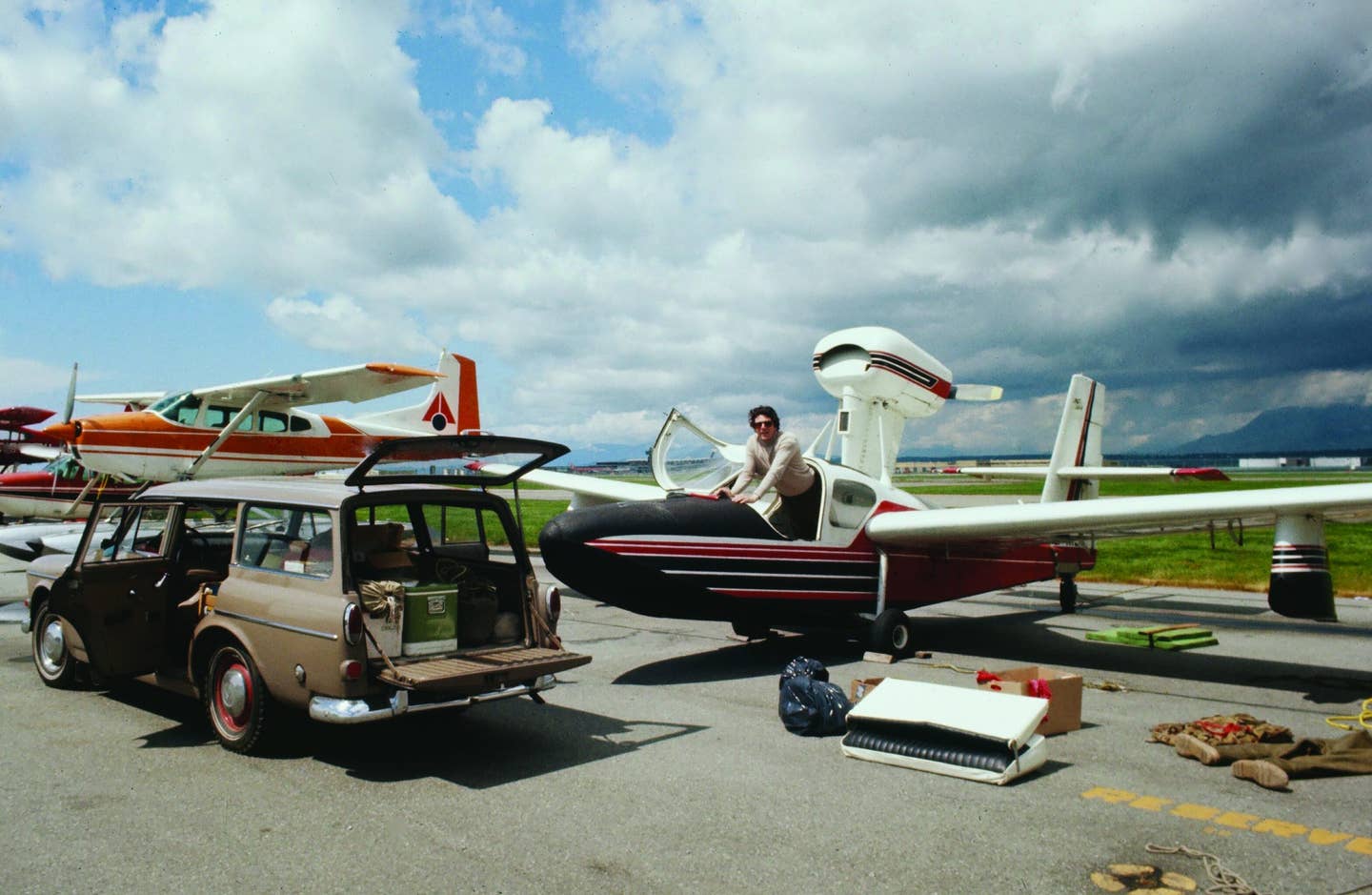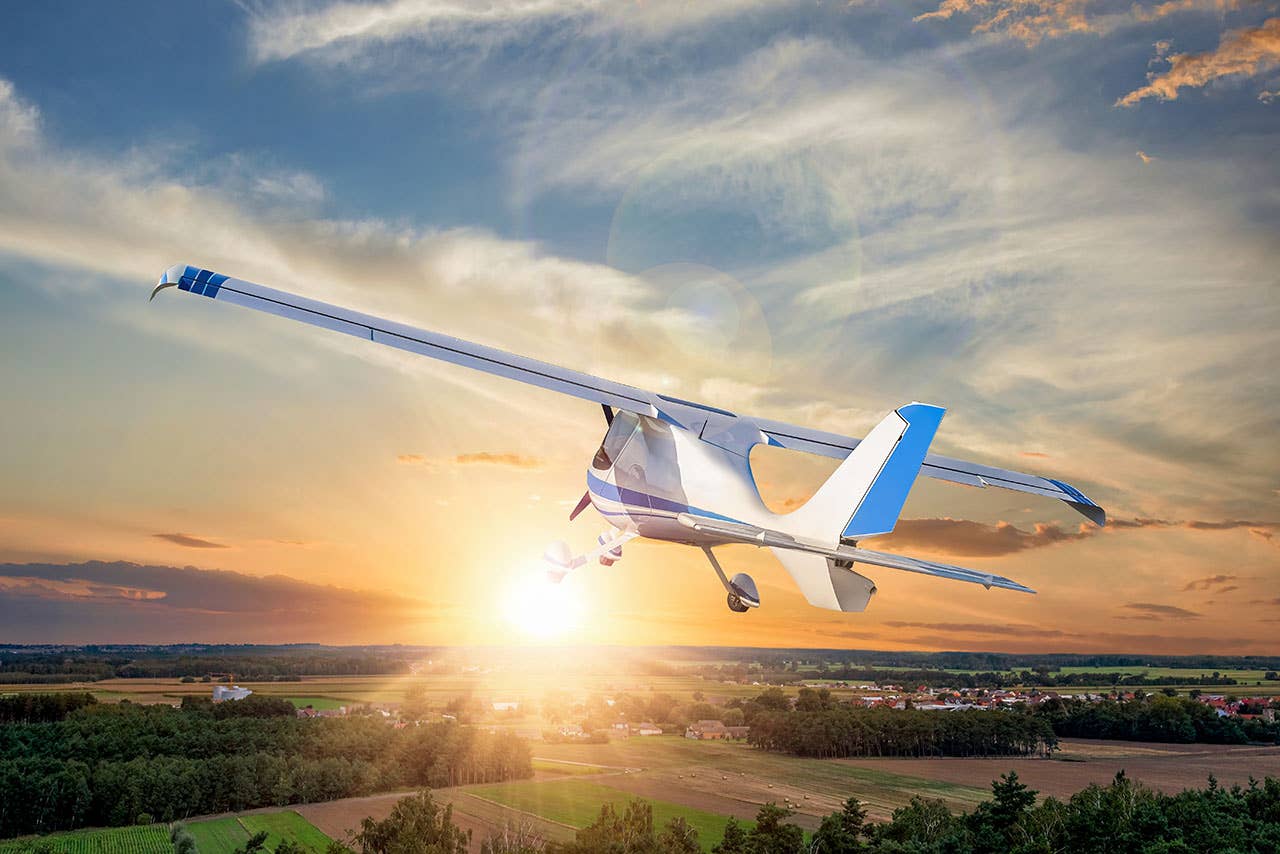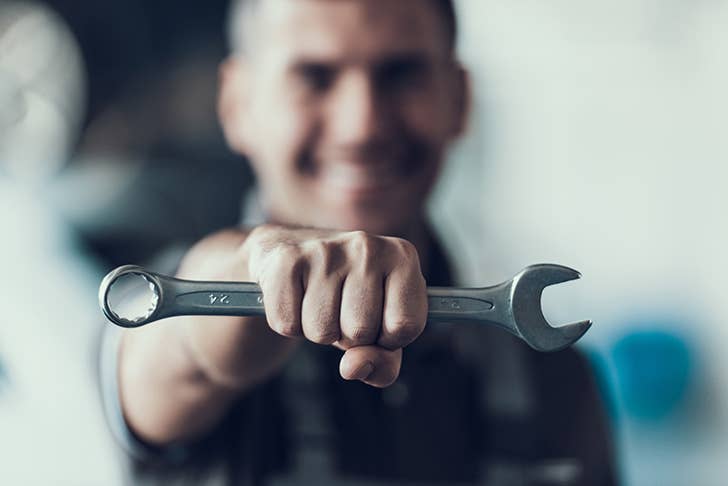Engine Break-In: It’s Easier Than You Think
A proper engine break-in can go far in encouraging long engine life, low oil burn and reliable service
 |
Perhaps more than some aviators, I'm often reminded how essential good mechanical work is on an airplane. Though I've been fortunate to fly a variety of aircraft in conjunction with overseas aircraft delivery and flight evaluation articles, my more normal rides are the same as yours---general aviation machines that don't need to work so hard for a living. Ferry pilots are well aware of the benefits of excellent maintenance, as they're sometimes forced to operate closer to the edge of the operational and systems envelope than some other pilots.
Delivery flying very often exposes pilots to the benefits/drawbacks of flying behind new or reconditioned engines. The benefits are obvious. The sometimes overriding drawback is the incidence of infant mortality, a tendency for engines to fail more often in the first dozen hours than in the next 500. To some limited extent, a proper break-in can shortstop that problem or at least reduce the chances of an early engine failure.
When the maintenance folks are finished rebuilding aircraft and engines, the pilot's job begins, and his may be the most critical mission, especially when it comes to breaking in new or overhauled engines. For about the last 25 years, I've done the majority of return-to-service test flying for Tom's Aircraft in Long Beach, Calif. Tom's shop works primarily on 300 and 400 Series Cessna twins, along with Caravans, Dukes, Barons, Navajos and the gamut of piston singles.
For that reason, I fly my share of test and break-in hops after an annual inspection or installation of topped or overhauled engines. Along the way, I've been privy to a library of tips and procedures from Tom's mechanics who always ride right seat on those flights. They record temperatures, pressures, rpm and other vital engine information, and make suggestions if something mechanical doesn't look right.
Perhaps surprisingly, the whole concept of engine break-in exists because engines are specifically designed for the break-in process. The engine's steel cylinders may appear to have smooth walls, but that's mostly an illusion. That's because a hone has been used to imprint microscopic grooves in the metal. The grooves act as tiny oil reservoirs that distribute lubricating oil along the surface of the cylinder. The piston rings are designed to travel the length of the cylinder and must hydroplane on that oil film throughout their travel. If there were no oil on the cylinder wall, the piston ring and cylinder would make metal-to-metal contact. Not a good thing under normal circumstances.
That's exactly the reason for the wise mechanic's advice that, "The worst thing you can do to your engine is start it." A cold start, especially one after several weeks of shutdown, virtually guarantees that all the oil has run down off the cylinder, so you'll be maximizing metal contact for at least several seconds.
 |
The purpose of break-in is to wear down these peaks and deliberate inconsistencies in the cylinder walls, so the rings will more adequately seat with the cylinder. Normally, lubricating oil is present to inhibit metal-to-metal contact. Perhaps counterintuitively, the process of engine break-in actually encourages the rings to rub against the cylinder walls to wear down the high spots, so the rings will seat properly, and the engine will deliver consistent power and compression from every cylinder.
Channel chrome cylinders aren't honed because they already have minuscule channels embedded in the chrome surface created by the electroplating process. Nevertheless, the same flattening of the peaks is necessary to assure minimum oil consumption and optimum cylinder pressure. Considering that chrome is harder than standard steel, seating may demand a longer break-in process.
advice that, the worst thing you can do to your engine
is start it.
To that end, you're usually instructed to use non-detergent mineral oil for the first 50 hours or so. That's because non-detergent oil is thinner and less resistant to inhibiting metal-to-metal contact. Detergent or ashless dispersant oils are deliberately designed to protect the cylinder walls after the break-in process is complete. These have a higher film strength that can make it more difficult for the rings to abrade the high spots and may result in a glaze on the cylinder walls, producing increased oil consumption and less compression.
Another concern of using detergent oils during break-in is that the frictional process can produce very high operating temperatures on the cylinder walls. As mentioned above, when piston engine cylinders are manufactured, they're honed with a diamond crosshatch pattern designed to retain an oil film on the wall to lubricate the piston during operation. If these tiny crosshatched patterns become glazed over, oil may tend to run down the walls and reduce lubrication.
If the glazing process occurs before break-in is complete, the piston rings won't seal properly. The cylinder walls' crosshatch grooves will no longer retain oil for proper lubrication, and the result will be poor gas seal and higher oil consumption. The only alternative to remove such an early glaze will be to re-hone the cylinder walls, the equivalent of a top overhaul.
Another important component of the break-in process is high power settings. These generate high combustion pressure that forces the piston ring to intrude into the oil film.
From the pilot's point of view, that means higher oil consumption during break-in, higher cylinder head temps and an increase in metal particles during oil analysis. For that reason, you may want to change the oil and filter more frequently than you might under normal conditions. Most shops suggest you change the oil after the first 10 hours of operation, but stick with mineral oil through at least the first 25 hours.
Operationally, pilot techniques aren't that different during break-in than in normal operation. Keep ground running to a minimum, especially on the first flight and during warm weather. If you're departing IFR and ATC anticipates a delay of more than a few minutes, consider shutting down rather than idling for that period.
Once you're cleared to go, initiate all takeoffs with cowl flaps full open if you have them. Use full-rated power for takeoff, and maintain the highest allowable power setting during climb. Proper cooling is critical during break-in as, by definition, you're subjecting the engine to more heat than normal. Don't be in a hurry during climb. You might even opt for a gradually decreasing angle and rate of climb to encourage airflow through the cowling.
 |
If you're flying a normally aspirated airplane, try to level at a low altitude that will allow you to use 75% power. Don't be eager to adjust the red knob in the climb, either. You may need to lean the mixture at some point, but break-in is a bad time to try to save fuel. Unless terrain clearance demands it, don't opt for a high altitude where max power is less than 75%, usually 6,000 feet or less. Climbing high won't provide adequate cylinder pressure to overcome the spring force of the piston rings, inhibiting "bedding."
Assuming you have excess power available, advance to max power every 30 minutes or so, maintain for a few minutes and return to cruise power. Most of the models I fly for Tom's Aircraft are turbocharged, and chief mechanic Mike Lambros and I normally fly the first hour or two of break-in for customers to assure the engines are off to a good start.
We'll operate at max cruise for a half hour, then reduce power by a few inches and perhaps 100 rpm for five minutes, then return to max cruise. Three or four cycles helps seat the rings initially, after which we leave the remainder of break-in procedure to the customer. Normal practice is to leave the cowl flaps open at cruise, no matter how much performance they cost you.
When it's time to descend, plan ahead. Prefer high-speed penetration letdowns with at least 75% power to maintain cylinder pressure. Carry enough power to maintain CHTs in the bottom of the green or higher. Don't even consider reducing power to minimum, so you can make a quick descent. Break-in is no time for shock cooling. Low-power descents can result in blow-by past the rings and oil not being scraped from the cylinder walls. In the worst case, the combination can generate excess oil burn that can inhibit ring seating.
Check the oil level frequently during break-in, and don't be alarmed if the engine seems to be burning an inordinate amount of oil. Fuel and oil aren't cheap, but be generous with both during the first 25 hours after a major overhaul, a top or even after reworking one or two cylinders. High oil consumption can be one of the curses of delivery flying, especially if you have a 15-hour leg to fly, an eight-quart capacity and a burn rate that can reach one quart every two hours.
The big question remains: How do you know when the break-in process is complete and you can switch to detergent oil? The standard answer used to be that it was okay to revert to ashless dispersant oil when consumption stabilized. That's still a reasonable parameter.
If you're using an engine analyzer such as a JPI EDM-800 or 900, however, you can monitor the change in CHT on each cylinder. Some pilots even create an impromptu engine log in which they record CHTs for a given power setting on every flight. When you see CHT drop by 50 degrees or more, that's a sign that the respective cylinder has seated. When all four (or six) CHTs have declined 50 degrees, it's time to change to detergent oil and resume normal operation.
The exact number of hours required for break-in will vary from one engine to the next, but John Frank, Executive Director of the Cessna Pilots Association, suggests, "I almost always see Cermichrome (cylinders) seat within an hour. Standard, nitrided steel cylinders take three to four hours and channel chrome a couple hours more."
The break-in should be complete by 25 hours, but some pilots follow the common proviso to run for 50 hours on mineral oil, then switch to detergent oil, ideally a single weight, non-synthetic oil.
Just remember the four ingredients for an optimum engine break-in: 1. Use mineral oil for the first 25 hours; 2. Operate at max allowable power to help seat the rings; 3. Expect high CHTs and offset them with high-speed climbs and open cowl flaps; 4. Try to minimize ground idle time to avoid overheating on the ground, and keep temperatures up during descents to reduce chances of shock cooling.
If the process above doesn't work, consider buying a turbine.

Subscribe to Our Newsletter
Get the latest Plane & Pilot Magazine stories delivered directly to your inbox






